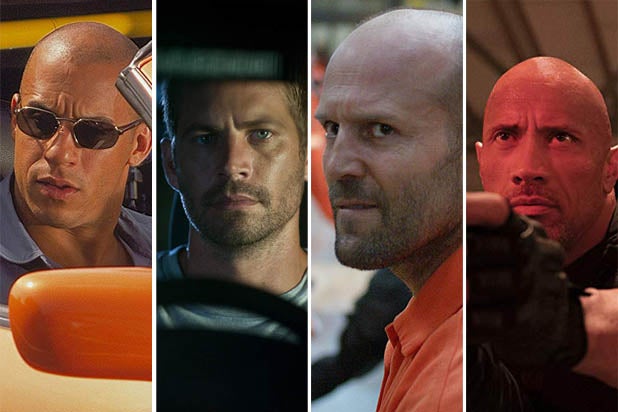'The Goldbergs' Sets 'Vacation'-Themed Season 7 Premiere
TCA 2019: Anthony Michael Hall and Christie Brinkley to guest star in the Disneyland-set episode
The “Fast & Furious” franchise is easy to dismiss as big, silly or even bad — but it’s definitely awesome. The distinction may seem nebulous, but measuring each film’s success or failure has less to do with whether or not you believe what’s happening on screen than whether what’s happening has blown your mind, scrambled your expectations or shown you something so preposterous that you have to admire it. Ironically, the series began as a more mundane version of Kathryn Bigelow’s thriller about surfing bank robbers, “Point Break” but it’s grown so far beyond the parameters of what in 1991 already seemed ridiculous that it’s impossible to evaluate them on a scale of anything from zero to 60 — the former number being the resting vibration of Vin Diesel’s throaty baritone, and the latter the circumference of Dwayne Johnson’s biceps.
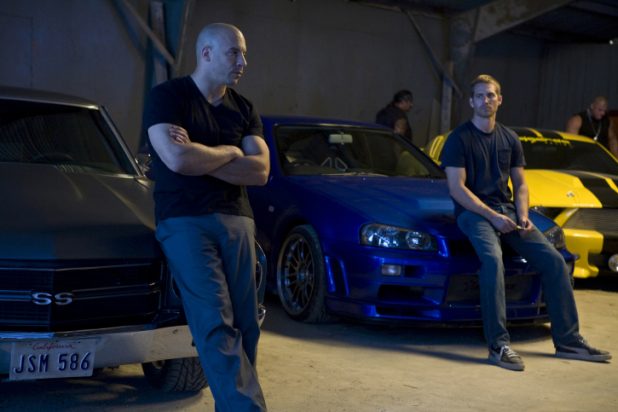
9. “Fast & Furious” (2009)
When 2006’s “Tokyo Drift” convinced Universal it was sitting on a largely untapped goldmine, the studio re-hired director Justin Lin and reunited the original series cast for a proper relaunch. Unfortunately, virtually every new decision feels like an “ah, f— it” solution to problems that subsequent films treated with much more nuance, especially reconnecting Brian, Dominic and the rest of Toretto’s outlaw crew. Meanwhile, an overlong finale set entirely in a cheap, phony-looking, CGI-enhanced underground tunnel robs the film of the tangibility — and vitality — that made Lin’s first “Fast and Furious” effort such a visceral delight.
Universal Pictures
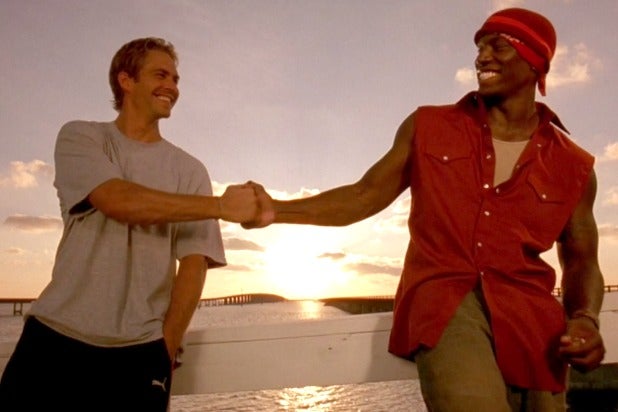
8. “2 Fast 2 Furious” (2003)
Despite introducing Tyrese’s goofy, charismatic sidekick Roman Pierce, and to a lesser extent, Ludacris’ Tej Parker, John Singleton’s follow-up to the original film is mostly a turd on wheels. Its attempts to re-create another undercover cop scenario involving Brian O’Conner showcase both the characters’ persistent stupidity and the franchise’s desperation, while Eva Mendes is sidelined as a bombshell love interest with lip-service authority, even as Cole Hauser’s extraordinarily bad impersonation of Robert De Niro as Argentinian drug lord Carter Verone feels telegraphed into the series from another film.
Universal Pictures

7. “The Fate of the Furious” (2017)
Bursting with cash but on the verge of bankruptcy for new ideas, F. Gary Gray mounted a handsome, appropriately operatic eighth installment featuring a couple of prestigious foes (Charlize Theron and Helen Mirren) but arguably the dumbest heel turn in modern movie history. No character has ever championed loyalty more emphatically than Dominic Toretto, so when he gets blackmailed into betraying his former friends and colleagues, every second feels more preposterous than the previous one. It features the silliest car action of the series — though, to be fair, Dwayne Johnson does punch a torpedo. “Fate” also betrays the series’ central “family” theme by making an ally of Jason Statham’s Shaw, who murdered a crew member in a previous film, without ever bothering to address the issue.
Universal Pictures
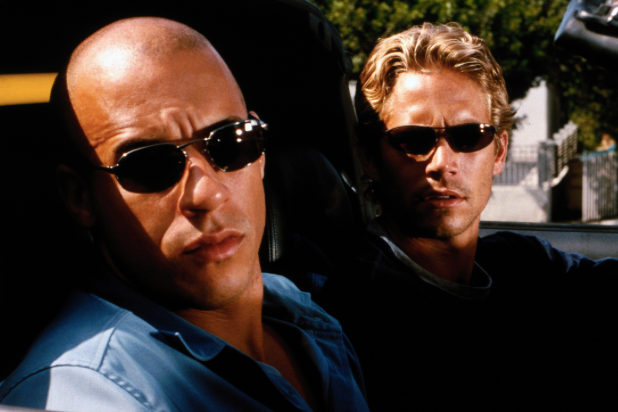
6. “The Fast and the Furious” (2001)
A transparent knockoff of “Point Break” set in the world of illegal street racing, Rob Cohen’s slick, comparatively realistic original couldn’t possibly have foreseen the wild and improbable places this franchise eventually went. But Cohen lacks Kathryn Bigelow’s chops both as a filmmaker and storyteller, using instantly dated CGI to “amplify” the intensity of the car-related action while reducing the cat-and-mouse dynamic between undercover cop Brian O’Conner (Paul Walker) and enigmatic hijacker Dominic Toretto (Vin Diesel) to unconvincing macho posturing.
Universal Pictures

5. “Furious 7” (2015)
In a giant retcon of “Tokyo Drift” — including the franchise’s most contentious piece of mythology, the death of Han (Sung Kang) — James Wan mounts some suitably ridiculous action, including airdropping sports cars over Azerbaijan and jumping a Lamborghini from one Abu Dhabi skyscraper to another, while expanding the series’ rogues gallery with Jason Statham’s Deckard Shaw, sibling to a former adversary who later, and to much controversy, becomes a colleague. Through no fault of the filmmakers, Paul Walker’s death casts a bittersweet pall over the onscreen adventures, as Brian’s departure inadvertently underscores the series’ shift away from the core elements that initially made it popular, much less the original cast members who were overshadowed by the likes of Statham and Dwayne Johnson.
Universal Pictures

4. “Fast & Furious Presents: Hobbs & Shaw” (2019)
Proving indisputably that this series does not need Vin Diesel, “Hobbs & Shaw” charms immediately by embracing the two leads’ oil-and-water buddy dynamic with their charisma working overtime in a story with its tongue firmly in its cheek. In possibly the best action movie that Michael Bay never made — if only because Bay would never make fun of himself — director David Leitch mounts one muscular, inventive action scene after another, supplies his musclebound leads with a truly formidable female counterpart in Vanessa Kirby’s Hattie Shaw and harnesses Idris Elba’s smoldering screen presence as some kind of human Transformer. All the while, he explores the franchise’s fixation on family ties with funny, surprisingly effective humanity.
Universal Pictures
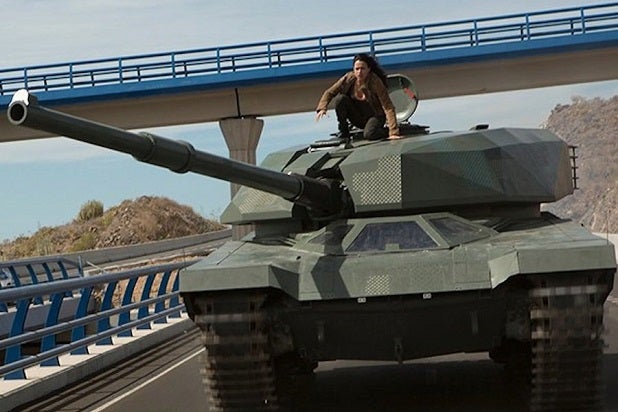
3. “Fast & Furious 6” (2013)
Emboldened by the creative and commercial success of “Fast Five,” Lin and Morgan go bigger and broader with the next film, giving Michelle Rodriguez’ Letty — previously presumed dead — amnesia, and establishing a highly improbable plot where shadowy government organizations hire a team of scruffy, car-obsessed outlaws to investigate and apprehend notorious thieves and terrorists, often in exchange for amnesty or forgiveness of criminal wrongdoing. Some great vehicular action bolsters this installment — especially when Letty drives a tank! — but it’s the series’ increasingly convoluted improbabilities that keep this film just below its top-ranking entries.
Universal Pictures
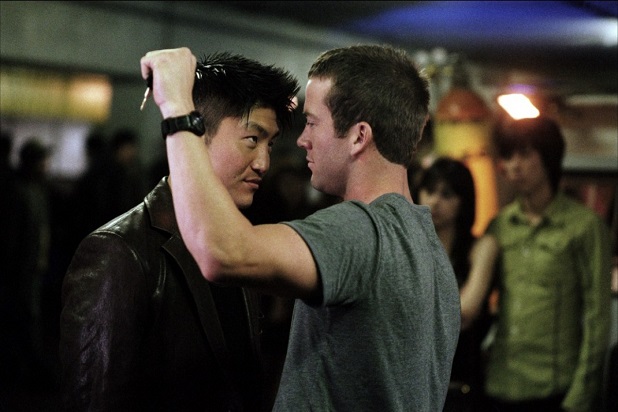
2. “The Fast and the Furious: Tokyo Drift” (2006)
Without the participation of the franchise’s two main stars, Justin Lin’s first contribution to the franchise not only piggybacked on the glossy energy of its two predecessors, but thoughtfully engaged more sophisticated ideas about street racing and car culture, especially after relocating to Japan. Lin inadvertently razed the chronology of the franchise in one fell swoop — a choice whose reverberations are still being felt — but he also codified a lot of the core franchise elements going forward, not just in terms of cars, crime and thrills, but emphasizing a multiethnic cast and taking the action to wherever in the world it can be most interestingly explored.
Universal Pictures

1. “Fast Five” (2011)
Virtually abandoning the street-racing pretext of the previous films for a slightly more generic, four-quadrant-friendly focus on international intrigues, Lin levels up big time the best film in the series. Adding “franchise Viagra” Dwayne Johnson helps supercharge the franchise’s beefcake quotient, but longtime “Fast and Furious” screenwriter Chris Morgan settles into a comfortable groove with human moments that bounce nicely off soapy melodramas while still delivering testosterone-fueled action driven either by an ambition to execute sequences practically or the overdue financial resources to make them look that way.
Universal Pictures
How does Dwayne Johnson and Jason Statham’s new spinoff “Hobbs & Shaw” stack up to the previous entries in the franchise?
The “Fast & Furious” franchise is easy to dismiss as big, silly or even bad — but it’s definitely awesome. The distinction may seem nebulous, but measuring each film’s success or failure has less to do with whether or not you believe what’s happening on screen than whether what’s happening has blown your mind, scrambled your expectations or shown you something so preposterous that you have to admire it. Ironically, the series began as a more mundane version of Kathryn Bigelow’s thriller about surfing bank robbers, “Point Break” but it’s grown so far beyond the parameters of what in 1991 already seemed ridiculous that it’s impossible to evaluate them on a scale of anything from zero to 60 — the former number being the resting vibration of Vin Diesel’s throaty baritone, and the latter the circumference of Dwayne Johnson’s biceps.
Source: Read Full Article
